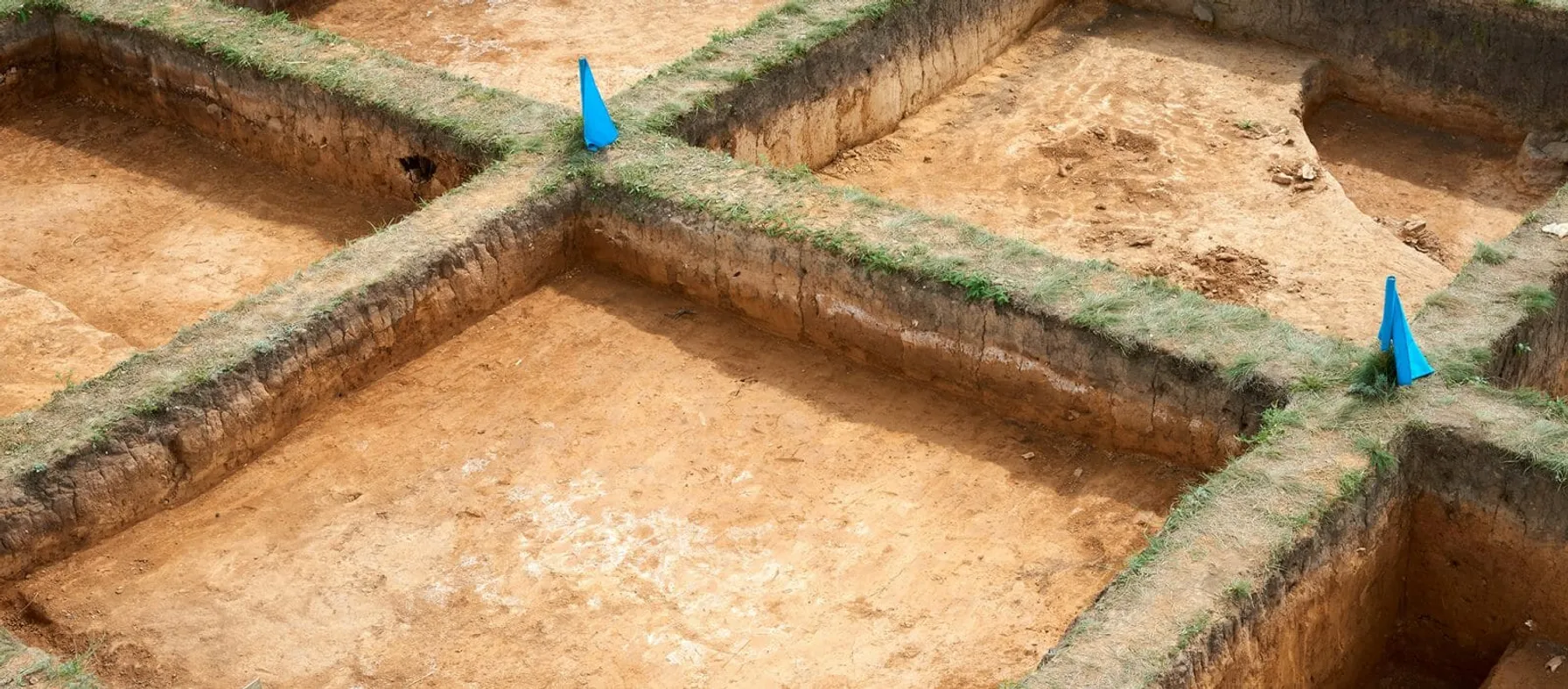Leading Environmental Assessment Expertise
We collaborate with you to provide comprehensive environmental studies that achieve projects’ goals and comply with federal, state and local protocols, including licensing and permitting requirements.

Working with clients to solve environmental challenges, including preserving and restoring sensitive habitats.

Cultural resources consulting and archaeological compliance services to meet the requirements associated with development.

Interactive, data-driven visualization solutions to enhance site understanding, streamline remediation strategies and improve stakeholder communication.

Collecting data on endangered species and critical habitat concerns for our energy, infrastructure and industry.

TRC provides strategies and techniques to characterize and measure conditions and ecological change in all environments.

Reviewing current and historical information to evaluate environmental risk.

Technical analysis of potential for risk to aid in site decision making and closure, and toxicology review of chemicals.
Related Materials
Gain insight into the industry’s challenges and opportunities by reading our research reports.
 TRC Expert Services
TRC Expert Services
Published June 1, 2023
Embrace The Shift
Partner With TRC’s Tested Practitioners
Featured Projects
Discover the success we’ve had with helping our clients execute major projects and make a meaningful impact on their local communities.

TRC developed a spreadsheet tool to identify all EPCRA- related regulatory requirements and assist in providing documents to the applicable …

TRC implemented an effective lockout/tagout program to protect workers from the risks associated with hazardous energy sources while meeting regulatory …

For nearly 25 years, TRC has enabled this refinery client to maintain compliance with complicated RCRA regulations

TRC is proud to be a partner with the Presidio Trust and looks forward to more successful projects.

The U.S. Environmental Protection Agency (EPA) selected TRC to assist in the development of scientifically valid data for the measurement …

TRC developed an approach that balanced impacts to existing marine uses, proximity to defined offshore wind lease areas, and efficient …

Comprehensive Evaluation for Sustainable Wetland Restoration

TRC developed a spreadsheet tool to identify all EPCRA- related regulatory requirements and assist in providing documents to the applicable …

TRC implemented an effective lockout/tagout program to protect workers from the risks associated with hazardous energy sources while meeting regulatory …

For nearly 25 years, TRC has enabled this refinery client to maintain compliance with complicated RCRA regulations

TRC is proud to be a partner with the Presidio Trust and looks forward to more successful projects.

The U.S. Environmental Protection Agency (EPA) selected TRC to assist in the development of scientifically valid data for the measurement …

TRC developed an approach that balanced impacts to existing marine uses, proximity to defined offshore wind lease areas, and efficient …

Comprehensive Evaluation for Sustainable Wetland Restoration
Sharing Our Perspectives
Our practitioners share their insights and perspectives on the trends and challenges shaping the market.

EPA Proposes New Guidance on Air Quality Analysis for Permits
January 5, 2024
On October 23, 2023, the US EPA proposed changes to the Guideline on Air Quality Models and the US EPA model AERMOD

Are You Prepared for 2024 TSCA Chemical Data Reporting?
October 9, 2023
Chemical Data Reporting (CDR), like the Olympics, occurs every four years, and then most facilities move on to more pressing environmental, health and safety (EHS) matters.

TRC ranking soars on ENR’s Top 200 Environmental Firms and ENR 500 Sourcebook
September 7, 2023
TRC Companies, an environmentally focused and digitally powered global solutions firm, ranked No. 24 – up from No. 39 in 2022 – in Engineering News-Record’s (ENR) annual survey of Top 200 Environmental Firms.

Changes to EPA’s Risk Management Program (RMP) Regulations Are Coming
April 14, 2023
Changes to the Risk Management Program (RMP) regulations were signed into a final rule on February 27, 2024, by EPA Administrator Michael S. Regan.

Deadline Approaching for Utilities to Report SF₆ Emissions to EPA
March 8, 2023
The EPA regulates greenhouse gas (GHG) emissions under the Greenhouse Gas Reporting Program (GHGRP) and has recently decided to place renewed emphasis on sulfur hexafluoride (SF₆).

Routinely Evaluating the Health & Effectiveness of Integrated Systems to Manage EHS/ESG Risks – Part I
March 1, 2023
Once established, an EHS/ESG management system must be routinely evaluated to ensure it remains effective to identify and control risks, as well as accommodate and adjust for changes that occur to/within the organization.

Northern Long-Eared Bat: Listing Changed from Threatened to Endangered
December 12, 2022
On November 30, 2022, the United States Fish & Wildlife Service (USFWS) published a final rule to the Federal Register to change the listing status of the northern long-eared bat (Myotis septentrionalis) from threatened to endangered.

Modeling: Convincing Visualizations Are Key to Successful Projects
December 5, 2022
This presentation provides guidance on steps and methods to utilize 3D and other visualization software to present complex sites and illustrate solutions to complex problems, such as remedial solutions and future site development. These methods involve 3 key concepts: data management coordination, conceptual site modeling and visual clarity. TRC’s experts also breakdown the different types of visualization software and their applications to specific scenarios.

EPA Penalizing Stationary Engine Violations
November 9, 2022
The EPA is identifying violations of the Clean Air Act and has taken enforcement actions and assessed penalties.

Proactive Enforcement is Key in the EPA FY2022-2026 Strategy
October 19, 2022
A core element of the EPA FY2022-2026 Strategic Plan focuses on environmental compliance.

Preparing for EPA Inspections in Environmental Justice Communities
October 4, 2022
The EPA Office of Enforcement and Compliance Assurance Have Expanded Goals to Strengthen Enforcement and Protections Within EJ Communities

New National Emerging Contaminants Research Initiative
September 12, 2022
The Executive Office of the President of the United States announced a National Emerging Contaminant Research Initiative

Optimizing EHS/ESG Information Management and Reporting Systems by Leveraging Innovative Digital Technology Solutions
August 10, 2022
A single, integrated enterprise wide EHS/ESG IMS can significantly improve performance and communicate progress towards organizational requirements and goals.

Support an Integrated EHS/ESG Management System
June 10, 2022
What Is an Indoor Air Quality Assessment? An indoor air quality assessment involves identifying and addressing air quality issues within a facility to ensure a healthy and safe environment for occupants. The assessment process typically includes an initial inspection, laboratory testing for contaminants, and recommendations for improvements. LEED-certified buildings prioritize indoor air quality, adopting measures to maintain good IAQ throughout construction and occupancy. Contact Us

How to Use an Integrated Approach To Manage EHS and ESG Risks
April 20, 2022
What Is an Indoor Air Quality Assessment? An indoor air quality assessment involves identifying and addressing air quality issues within a facility to ensure a healthy and safe environment for occupants. The assessment process typically includes an initial inspection, laboratory testing for contaminants, and recommendations for improvements. LEED-certified buildings prioritize indoor air quality, adopting measures to maintain good IAQ throughout construction and occupancy. Contact Us

Environmental Impacts of Transitioning to Renewables
May 15, 2021
The transition to renewable energy sources will have notable environmental impacts as well as economic impacts. To understand the possible implications, you’ll need some background knowledge of the ways fossil fuels affect the environment.

How to Take a Renewable Project From Planning to Construction
May 15, 2021
A widespread societal shift is underway — now is the time to reduce reliance on fossil fuels and begin renewable energy projects. Among those who should participate are utility companies. They can demonstrate good social consciousness and enjoy notable returns on investment (ROI) by implementing renewable energy projects. In this chapter, you’ll learn about the process of investing in renewables. Use this renewable energy project development guide to help you get started.

New Jersey’s Landmark Environmental Justice Law
November 24, 2020
What Is an Indoor Air Quality Assessment? An indoor air quality assessment involves identifying and addressing air quality issues within a facility to ensure a healthy and safe environment for occupants. The assessment process typically includes an initial inspection, laboratory testing for contaminants, and recommendations for improvements. LEED-certified buildings prioritize indoor air quality, adopting measures to maintain good IAQ throughout construction and occupancy. Contact Us

Ecological Risk of PFAS from AFFF-Impacted Sites
June 30, 2020
The facts on evaluating exposure to wildlife

EPA Proposes New Guidance on Air Quality Analysis for Permits
January 5, 2024
On October 23, 2023, the US EPA proposed changes to the Guideline on Air Quality Models and the US EPA model AERMOD

Are You Prepared for 2024 TSCA Chemical Data Reporting?
October 9, 2023
Chemical Data Reporting (CDR), like the Olympics, occurs every four years, and then most facilities move on to more pressing environmental, health and safety (EHS) matters.

TRC ranking soars on ENR’s Top 200 Environmental Firms and ENR 500 Sourcebook
September 7, 2023
TRC Companies, an environmentally focused and digitally powered global solutions firm, ranked No. 24 – up from No. 39 in 2022 – in Engineering News-Record’s (ENR) annual survey of Top 200 Environmental Firms.

Changes to EPA’s Risk Management Program (RMP) Regulations Are Coming
April 14, 2023
Changes to the Risk Management Program (RMP) regulations were signed into a final rule on February 27, 2024, by EPA Administrator Michael S. Regan.

Deadline Approaching for Utilities to Report SF₆ Emissions to EPA
March 8, 2023
The EPA regulates greenhouse gas (GHG) emissions under the Greenhouse Gas Reporting Program (GHGRP) and has recently decided to place renewed emphasis on sulfur hexafluoride (SF₆).

Routinely Evaluating the Health & Effectiveness of Integrated Systems to Manage EHS/ESG Risks – Part I
March 1, 2023
Once established, an EHS/ESG management system must be routinely evaluated to ensure it remains effective to identify and control risks, as well as accommodate and adjust for changes that occur to/within the organization.

Phase I ESA ASTM Standard Update: The Wait is Over
December 21, 2022
The USEPA published a Final Rule making the ASTM E1527-21 Phase I ESA standard AAI compliant.

Northern Long-Eared Bat: Listing Changed from Threatened to Endangered
December 12, 2022
On November 30, 2022, the United States Fish & Wildlife Service (USFWS) published a final rule to the Federal Register to change the listing status of the northern long-eared bat (Myotis septentrionalis) from threatened to endangered.

Modeling: Convincing Visualizations Are Key to Successful Projects
December 5, 2022
This presentation provides guidance on steps and methods to utilize 3D and other visualization software to present complex sites and illustrate solutions to complex problems, such as remedial solutions and future site development. These methods involve 3 key concepts: data management coordination, conceptual site modeling and visual clarity. TRC’s experts also breakdown the different types of visualization software and their applications to specific scenarios.

EPA Penalizing Stationary Engine Violations
November 9, 2022
The EPA is identifying violations of the Clean Air Act and has taken enforcement actions and assessed penalties.

Proactive Enforcement is Key in the EPA FY2022-2026 Strategy
October 19, 2022
A core element of the EPA FY2022-2026 Strategic Plan focuses on environmental compliance.

Preparing for EPA Inspections in Environmental Justice Communities
October 4, 2022
The EPA Office of Enforcement and Compliance Assurance Have Expanded Goals to Strengthen Enforcement and Protections Within EJ Communities

New National Emerging Contaminants Research Initiative
September 12, 2022
The Executive Office of the President of the United States announced a National Emerging Contaminant Research Initiative

Optimizing EHS/ESG Information Management and Reporting Systems by Leveraging Innovative Digital Technology Solutions
August 10, 2022
A single, integrated enterprise wide EHS/ESG IMS can significantly improve performance and communicate progress towards organizational requirements and goals.

Support an Integrated EHS/ESG Management System
June 10, 2022
What Is an Indoor Air Quality Assessment? An indoor air quality assessment involves identifying and addressing air quality issues within a facility to ensure a healthy and safe environment for occupants. The assessment process typically includes an initial inspection, laboratory testing for contaminants, and recommendations for improvements. LEED-certified buildings prioritize indoor air quality, adopting measures to maintain good IAQ throughout construction and occupancy. Contact Us

How to Use an Integrated Approach To Manage EHS and ESG Risks
April 20, 2022
What Is an Indoor Air Quality Assessment? An indoor air quality assessment involves identifying and addressing air quality issues within a facility to ensure a healthy and safe environment for occupants. The assessment process typically includes an initial inspection, laboratory testing for contaminants, and recommendations for improvements. LEED-certified buildings prioritize indoor air quality, adopting measures to maintain good IAQ throughout construction and occupancy. Contact Us

Environmental Impacts of Transitioning to Renewables
May 15, 2021
The transition to renewable energy sources will have notable environmental impacts as well as economic impacts. To understand the possible implications, you’ll need some background knowledge of the ways fossil fuels affect the environment.

How to Take a Renewable Project From Planning to Construction
May 15, 2021
A widespread societal shift is underway — now is the time to reduce reliance on fossil fuels and begin renewable energy projects. Among those who should participate are utility companies. They can demonstrate good social consciousness and enjoy notable returns on investment (ROI) by implementing renewable energy projects. In this chapter, you’ll learn about the process of investing in renewables. Use this renewable energy project development guide to help you get started.

New Jersey’s Landmark Environmental Justice Law
November 24, 2020
What Is an Indoor Air Quality Assessment? An indoor air quality assessment involves identifying and addressing air quality issues within a facility to ensure a healthy and safe environment for occupants. The assessment process typically includes an initial inspection, laboratory testing for contaminants, and recommendations for improvements. LEED-certified buildings prioritize indoor air quality, adopting measures to maintain good IAQ throughout construction and occupancy. Contact Us

Ecological Risk of PFAS from AFFF-Impacted Sites
June 30, 2020
The facts on evaluating exposure to wildlife
























